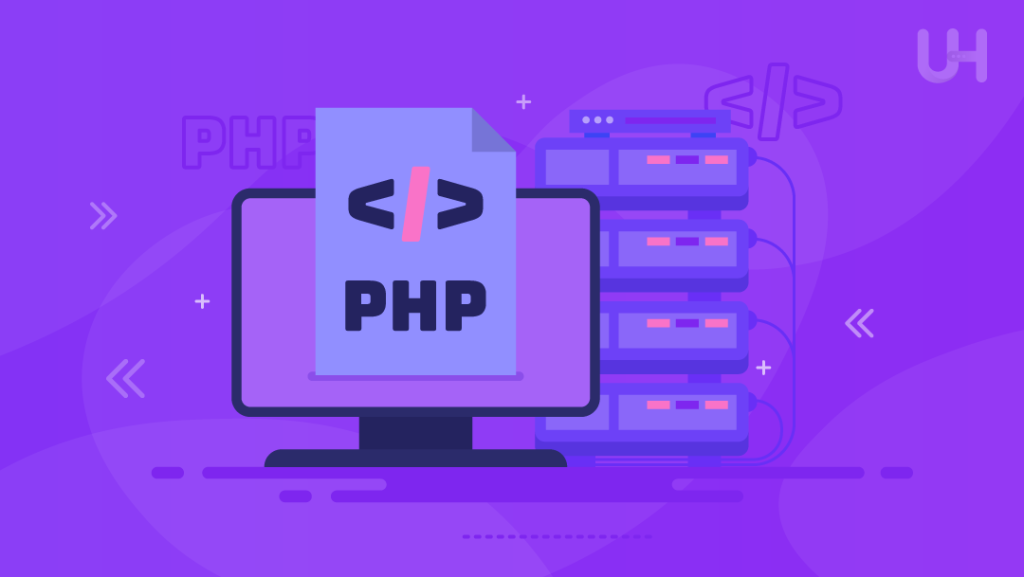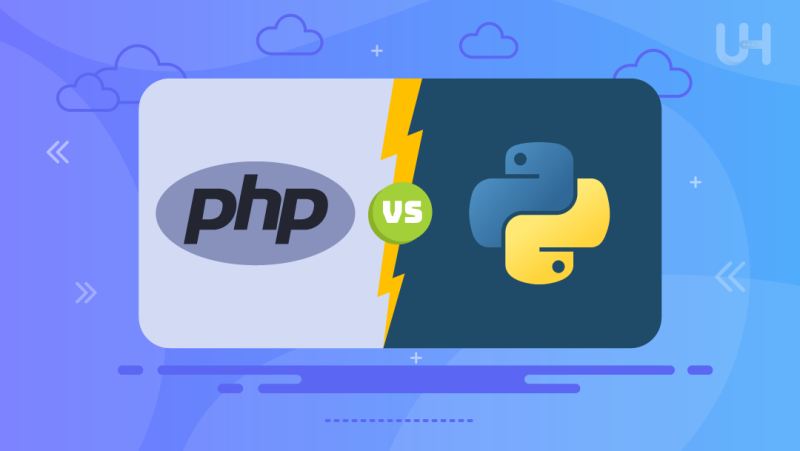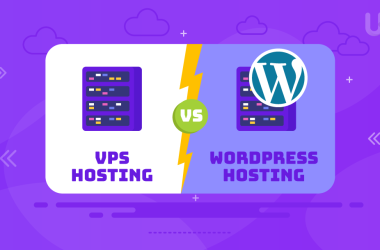In programming languages, PHP vs Python comparison is a never-ending debate. Both have established themselves as formidable contenders, each with its own distinct characteristics and applications. PHP, originally crafted for web development, has long been a staple of the internet. Meanwhile, Python, known for its simplicity and versatility, has transcended its origins as a scripting language to become a dominant force in fields ranging from data science to artificial intelligence.
The significance of selecting the appropriate programming language cannot be overstated in software development. It shapes the development process, influencing factors such as ease of coding, scalability, and overall performance. Making the wrong choice can result in inefficiencies, prolonged development cycles, and suboptimal outcomes. Thus, developers and businesses alike must carefully assess their options. Also, consider project requirements, offshore development company expertise, and long-term objectives.
Overview of PHP
What is PHP? It stands for “Hypertext Preprocessor,” emerged in the mid-1990s as a personal project of Danish-Canadian programmer Rasmus Lerdorf. Originally, PHP served as a collection of Perl scripts for managing his personal homepage, which he named “Personal Home Page Tools” or PHP Tools. Over time, Lerdorf rewrote these scripts in the C programming language, adding features for form handling and database interaction. This formed the foundation of PHP/FI (Personal Home Page/Forms Interpreter), which was publicly released in 1995.
PHP’s early versions were primarily used for server-side scripting, generating dynamic web content by embedding PHP code within HTML pages. As its popularity grew, the PHP development team, led by Lerdorf, released version 3 in 1998, introducing significant improvements and enhancements. Version 4, released in 2000, marked a major milestone with the introduction of the Zend Engine, a powerful scripting engine that greatly improved PHP’s performance and capabilities.
Subsequent iterations, including PHP 5 and PHP 7, brought about significant advancements. Such as object-oriented programming, error handling, and performance optimization. PHP 7, released in 2015, represented a quantum leap in performance. It boasts up to twice the speed of PHP 5 while consuming fewer system resources. Furthermore, PHP 7 introduced features such as scalar type declarations, return type declarations and anonymous classes. It further enhances PHP as a modern programming language.
Strengths
- Widely Used in Web Development: PHP’s dominance in web development is unparalleled. It powers a significant portion of the internet’s server-side logic. Its simplicity, ease of deployment, and compatibility with popular web servers such as Apache and Nginx have contributed to its widespread adoption. PHP is integral to popular content management systems (CMS) like WordPress, Drupal and Joomla. It is also important for frameworks like Laravel, Symfony, and CodeIgniter.
- Scalability: Despite criticisms regarding its performance, PHP is inherently scalable and can handle high-traffic websites and applications with relative ease. Techniques such as opcode caching, database optimization, and distributed caching mechanisms enable PHP applications to scale across multiple servers. It accommodates growing user bases and increasing workloads.
- Large Community Support: PHP benefits from a vast and active community of developers, enthusiasts, and contributors. Ultimately, provides a wealth of resources and support. The PHP community maintains extensive documentation, tutorials, forums, and online communities. Developers can seek assistance, share knowledge, and collaborate on projects. This robust ecosystem fosters innovation and ensures that PHP remains relevant and adaptable to web servers for PHP development.
Weaknesses
- Performance Issues: One of the longstanding criticisms of PHP has been its performance. Particularly in comparison to compiled languages like C++ or Java. PHP’s interpreted nature and dynamic typing can lead to inefficiencies, especially in high-throughput applications. While significant improvements have been made in recent versions, performance remains a consideration for applications requiring optimal speed and resource utilization.
- Not as Versatile as Python: Unlike Python, which enjoys widespread adoption across various domains. Such as data science, machine learning, and scientific computing, PHP is primarily focused on web development. PHP can be used for tasks beyond web scripting, such as command-line scripting and server-side automation. Its feature set and syntax are tailored primarily for web-related tasks, limiting its versatility in other domains.
- Limited Application Beyond Web Development: Despite its prevalence in web development, PHP’s utility beyond this domain is relatively limited. PHP can be used for tasks such as server-side scripting, command-line utilities, and automation scripts. Its capabilities in areas such as data analysis, scientific computing, and desktop applications are not as robust as those of more general-purpose languages like Python.
In short, PHP’s rich history, widespread adoption in web development, and extensive community support make it a formidable choice for building dynamic and scalable web applications. However, its performance limitations and narrow focus on web development may deter developers seeking a more versatile language for diverse computing tasks. Despite these drawbacks, PHP remains a cornerstone of the web development ecosystem, powering millions of websites with web hosting worldwide.
Overview of Python
Python, conceived by Dutch programmer Guido van Rossum in the late 1980s, emerged as a general-purpose programming language with a focus on simplicity and readability. The first public release, Python 0.9.0, occurred in 1991, followed by subsequent versions that introduced features such as exception handling, modules, and the extensive standard library. Python’s design philosophy, encapsulated in “The Zen of Python,” emphasizes clarity, simplicity, and explicitness, making it an ideal choice for beginners and seasoned developers alike. Within the years, the Python tech stack was common among freelance, in-house, offshore Python developers, etc.
Over the years, Python has undergone significant evolution, with major releases introducing enhancements and improvements to the language’s syntax, performance, and capabilities. Python 2.x, the predominant version for over a decade, was succeeded by Python 3.x in 2008, marking a transition to a more modern and streamlined language. Python 3 brought about numerous improvements, including Unicode support, function annotations, and asynchronous programming features, further solidifying Python’s position as a versatile and powerful programming language.
Strengths
- Versatility: Python’s versatility is one of its defining attributes, enabling its usage across a wide range of domains and applications. In addition to its popularity in web development, Python has gained significant traction in fields such as data science, machine learning, artificial intelligence, scientific computing, and automation. Frameworks and libraries such as Django, Flask, NumPy, pandas, TensorFlow, and PyTorch empower developers to build complex and innovative solutions across diverse domains.
- Strong Community and Ecosystem: Python benefits from a vibrant and extensive community of developers, educators, and enthusiasts, contributing to its rapid growth and widespread adoption. The Python community fosters collaboration, knowledge sharing, and mentorship through events, conferences, forums, and online communities. Furthermore, Python’s rich ecosystem of third-party packages and libraries provides developers with access to a vast array of tools and resources, accelerating development and enabling the creation of robust and scalable applications.
- Performance Improvements Over the Years: Python’s performance has steadily improved with each successive release, thanks to ongoing optimizations and enhancements to the language’s implementation. Efforts such as the PyPy project, which aims to create a fast, compliant, and flexible implementation of Python, have resulted in significant performance gains for certain workloads. Additionally, advancements in just-in-time (JIT) compilation, bytecode optimization, and runtime optimizations have further boosted Python’s performance, narrowing the gap with compiled languages in certain scenarios.
Weaknesses
- Learning Curve for Beginners: While Python’s syntax and readability make it accessible to beginners, mastering the language and its ecosystem can pose challenges for novices. Python’s extensive standard library, diverse ecosystem of third-party packages, and dynamic nature can overwhelm newcomers. It requires time and effort to navigate effectively. Furthermore, Python’s adherence to best practices and idiomatic usage may differ from other programming languages. Therefore, necessitating a period of adjustment for individuals transitioning from other languages.
- GIL (Global Interpreter Lock) Limitations in Multi-Threading: Python’s Global Interpreter Lock (GIL) is a contentious topic in the Python community. Because it can hinder the performance of multi-threaded applications. The GIL, a mutex that protects access to Python objects, prevents multiple native threads from executing Python bytecodes simultaneously. Furthermore, limiting the effectiveness of multi-threading for CPU-bound tasks. The alternatives such as multiprocessing and asynchronous programming mitigate the impact of the GIL. It remains a consideration for developers seeking to leverage multi-threading for performance optimization.
In short, Python’s rich history, versatility, strong community support, and ongoing performance improvements position it as a formidable choice for a wide range of applications and industries. However, challenges such as the learning curve for beginners and the limitations imposed by the GIL underscore the importance of understanding Python’s nuances and choosing appropriate strategies for addressing performance constraints. Despite these weaknesses, Python’s ubiquity and adaptability ensure its continued relevance and prominence in the ever-evolving landscape of programming languages.
Python vs PHP: Comparison in 2024
PHP vs Python: Performance Benchmarks
In 2024, Python vs PHP performance benchmarks continue to be a crucial aspect. Developers and businesses need to assess how each language performs in real-world scenarios, considering factors such as execution speed, memory usage, and scalability. Performance testing frameworks and tools have evolved to provide more accurate and comprehensive measurements, allowing for precise comparisons between PHP and Python.
PHP has made significant strides in recent years, particularly with the release of PHP 8. With enhancements such as JIT compilation and improvements to the Zend Engine, PHP has seen notable improvements in execution speed and resource utilization. Frameworks like Laravel and Symfony have optimized their codebases for improved performance, making PHP a competitive option for high-traffic web applications.
Python, meanwhile, has also seen advancements in performance, albeit with different approaches. Projects like PyPy continue to explore just-in-time (JIT) compilation to accelerate Python code execution. Additionally, libraries such as NumPy and TensorFlow leverage optimized C and C++ backends for computationally intensive tasks, enhancing Python’s performance in scientific computing and machine learning domains.
Ready to Elevate Your PHP Projects?
Start your hosting journey tailored for unparalleled success. Dive deep into the intricate world of PHP hosting with Ultahost, where cutting-edge technology meets reliability.
PHP vs Python: Ease of Learning and Use
Evaluating the ease of learning and using PHP and Python involves considering factors such as syntax simplicity, available learning resources, and community support. In 2024, both languages offer robust ecosystems of tutorials, documentation, and online communities to support developers of all skill levels.
PHP’s syntax, inspired by languages like C and Perl, is relatively straightforward, making it accessible to beginners. The language’s focus on web development simplifies the learning curve for those interested in building dynamic websites and applications. Frameworks like Laravel provide elegant solutions for common web development tasks, further streamlining the development process.
Python’s readability and simplicity have long been celebrated, making it an attractive choice for beginners and experienced developers alike. The language’s clean syntax and extensive standard library enable rapid development and prototyping across various domains. Moreover, Python’s versatility extends beyond web development to fields such as data science, artificial intelligence, and automation. Therefore, broadening its appeal to a diverse audience.
PHP vs Python: Community and Ecosystem
The PHP and Python communities continue to thrive in 2024, offering extensive support and resources for developers worldwide. Community size, activity, and diversity are essential factors to consider when comparing PHP and Python.
PHP boasts a large and active community, with dedicated forums, user groups, and conferences fostering collaboration and knowledge sharing. The PHP ecosystem includes a plethora of frameworks, libraries, and tools tailored to web development, catering to diverse project requirements and preferences. Popular frameworks like Symfony and CodeIgniter enjoy widespread adoption and robust community support, ensuring continued innovation and development.
Python’s community is equally vibrant and diverse, with a global network of developers contributing to the language’s growth and evolution. The Python Package Index (PyPI) hosts tens of thousands of third-party packages. These packages range from web frameworks like Django and Flask to scientific computing libraries like NumPy and SciPy. The Python Software Foundation (PSF) oversees community initiatives, events, and projects, promoting inclusivity and collaboration within the Python community.
PHP vs Python: Industry Trends and Job Market
Assessing industry trends and the job market provides insight into the demand for PHP and Python developers and the prevalence of each language in various sectors. In 2024, both languages continue to play significant roles in the software development landscape, albeit with different emphases and applications.
PHP remains a cornerstone of web development, powering millions of websites and web applications worldwide. Its prevalence in content management systems (CMS) like WordPress and e-commerce platforms like Magento underscores its importance in the digital economy. Job opportunities for offshore PHP developers are abundant, with roles ranging from frontend and backend development to system administration and DevOps.
Python’s versatility and adaptability have led to its widespread adoption across diverse domains. It includes data science, machine learning, artificial intelligence, and automation. MLOps consulting can help businesses leverage Python to develop and deploy effective machine learning models. The demand for Python developers continues to grow, driven by emerging technologies and the increasing reliance on data-driven decision-making. Job roles such as data scientist, machine learning engineer, and software developer increasingly require proficiency in Python and related frameworks and tools.
PHP vs Python: Scalability and Flexibility
Scalability and flexibility are critical considerations when comparing PHP and Python. It is particularly concerning their suitability for handling varying workloads and adapting to evolving project requirements.
PHP’s scalability is well-established, with numerous high-traffic websites and applications built on PHP frameworks like Laravel and Symfony. Horizontal scaling, achieved through load balancing and distributed caching, allows PHP applications to accommodate growing user bases and increasing workloads effectively. Additionally, PHP’s support for asynchronous programming and event-driven architectures enables efficient resource utilization and improved performance for concurrent tasks.
Python’s scalability extends beyond web development to domains such as scientific computing, data processing, and machine learning. Libraries like NumPy, pandas, and TensorFlow provide scalable solutions for handling large datasets and implementing complex algorithms. Python’s support for concurrency and parallelism, facilitated by frameworks like asyncio and multiprocessing, allows developers to leverage multicore processors and distributed computing environments for improved performance and scalability.
PHP vs Python: Security Considerations
Security considerations are paramount when evaluating PHP and Python for building secure and resilient applications. Both languages offer built-in security features and best practices to mitigate common vulnerabilities and threats.
PHP’s security features include input validation, output sanitization, and secure session management, helping prevent common web vulnerabilities. Such as SQL injection, cross-site scripting (XSS), and cross-site request forgery (CSRF). Frameworks like Laravel incorporate security mechanisms like CSRF token generation and content security policies (CSP) to further enhance application security.
Python emphasizes security through principles such as code readability, code review, and defensive programming. Python’s standard library includes modules for cryptography, SSL/TLS, and secure random number generation. Also, provides developers with tools to implement robust security measures. Additionally, Python frameworks like Django coupled with Django hosting offer built-in protections against common web vulnerabilities and encourage secure coding practices.
PHP vs Python: Future Prospects and Developments
Looking ahead, the future prospects and developments of PHP and Python are influenced by emerging technologies, industry trends, and community initiatives. Predicting the trajectory of each language requires considering factors such as language evolution, ecosystem growth, and adoption patterns.
PHP’s future is shaped by ongoing efforts to modernize the language and ecosystem. It is due to initiatives such as PHP 8 and PHPNG (PHP Next-Generation) driving performance improvements and language enhancements. The PHP community continues to innovate with new frameworks, tools, and libraries, addressing evolving web development trends and challenges.
Python’s future is characterized by its versatility and adaptability to emerging technologies. Continued advancements in scientific computing, machine learning, and artificial intelligence further solidify Python’s position as a leading language for data-driven applications. Additionally, community-driven initiatives such as PEP process and Python governance model ensure transparency and inclusivity in guiding the language’s evolution.
PHP vs Python: Use Cases and Applications

Web Development
PHP Frameworks (e.g., Laravel, Symfony):
PHP frameworks like Laravel and Symfony are integral to modern web development, offering developers robust tools and conventions to streamline the creation of scalable and maintainable web applications. Laravel, renowned for its elegant syntax and developer-friendly features, simplifies common web development tasks such as routing, authentication, and database interaction.
With its expressive syntax and extensive documentation, Laravel has become a popular choice for building sophisticated web applications. Similarly, Symfony, a high-performance PHP framework, provides developers with a modular architecture and a rich set of components to create complex web applications efficiently. By leveraging features like dependency injection and event dispatching, Symfony empowers developers to craft flexible and extensible solutions tailored to their specific needs.
Python Frameworks (e.g., Django, Flask):
In web development, Python frameworks such as Django and Flask offer powerful tools to build robust web applications. Django, a high-level Python web framework, follows the “batteries-included” philosophy, providing built-in features for rapid development and scalability. Its comprehensive approach includes features like URL routing, template rendering, and database integration, making it ideal for building complex web applications.
On the other hand, Flask, a lightweight and flexible web framework, provides developers with the essentials for web development without imposing strict conventions. Its minimalistic design and modular architecture make it well-suited for prototyping, smaller projects, and microservices. Both Django and Flask leverage Python’s simplicity and readability to facilitate web development. Moreover, with extensive documentation and active communities enhancing the development experience for Python developers.
Data Science and AI
Python has emerged as a dominant language for data science, machine learning and artificial intelligence applications. It is due to its rich ecosystem of libraries and tools, simplicity, and versatility. Libraries like NumPy, pandas, and SciPy provide essential tools for data manipulation, analysis, and visualization. They enable data scientists to extract insights and make data-driven decisions.
Additionally, frameworks like TensorFlow, PyTorch, and scikit-learn offer robust solutions for machine learning and deep learning tasks. Furthermore, empowering developers to build and deploy advanced AI models effectively. Python’s popularity in the data science and AI communities is further bolstered by its interoperability with other languages and platforms. Also, facilitating integration with existing systems and workflows.
System Automation and Scripting
Python’s simplicity and readability make it an excellent choice for system automation and scripting tasks across diverse environments. Its extensive standard library includes modules for file handling, process management and networking. Moreover, it enables developers to automate repetitive tasks and streamline workflows effectively.
Python’s cross-platform compatibility and broad support for operating systems make it suitable for system administration tasks. These tasks range from file manipulation to system monitoring and batch processing. Moreover, frameworks like Ansible and SaltStack leverage Python’s scripting capabilities to provide powerful automation solutions for configuration management, orchestration, and deployment in IT infrastructure environments.
IoT (Internet of Things) Applications
Python’s versatility extends to IoT applications, where its simplicity and ease of integration make it an attractive choice for developing embedded systems and IoT devices. Libraries like MicroPython and CircuitPython offer lightweight implementations of Python. Also, it optimizes for microcontrollers and embedded systems, allowing developers to write Python code directly on IoT devices.
Python’s extensive ecosystem of libraries and frameworks provides support for IoT protocols, sensor data processing, and device communication. It enables developers to build end-to-end IoT solutions efficiently. Platforms like Raspberry Pi and Arduino leverage Python’s capabilities to enable rapid prototyping and development of IoT projects. Moreover, it fosters innovation and experimentation in the IoT space.
Conclusion
In conclusion, the comparison between PHP vs Python in 2024 reveals the strengths, applications, and considerations for each language. While PHP continues to dominate in web development, bolstered by frameworks like Laravel and Symfony, Python’s versatility extends to data science, AI, system automation, and IoT applications.
Both languages offer robust ecosystems, vibrant communities, and ample opportunities for developers and businesses alike. Whether building dynamic web applications, analyzing large datasets, automating system tasks, or innovating in the IoT space, PHP vs Python for web development provides versatile and powerful platforms to realize a wide range of projects and innovations.
If you decide Python is the best fit for your needs, ensure you pair it with a reliable hosting provider to optimize performance and scalability. For Python hosting, consider Ultahost. With features tailored for Python applications, Ultahost provides the speed, security, and support necessary to take your projects to the next level.
FAQ
Which is better, PHP or Python?
Both have strong frameworks: PHP (Laravel, Symfony) and Python (Django, Flask). Choice depends on project needs and developer preference.
What is the security difference between Python and PHP?
Both offer security features. PHP focuses on input validation and session management, while Python provides modules for encryption and secure communication.
Can Python be used for system automation and scripting?
Yes, Python’s simplicity and extensive library make it ideal for system automation. Frameworks like Ansible and SaltStack leverage Python for IT automation tasks.
Are there specific industries where PHP or Python is commonly used?
PHP is prevalent in industries requiring web development, such as e-commerce, content management, and online services. Python finds extensive usage in data-driven sectors like finance, healthcare, and scientific research, due to its strength in data analysis and AI.
Is one language more beginner-friendly than the other?
Python is often considered more beginner-friendly due to its clean syntax and readability. PHP’s simplicity in web development also makes it accessible to beginners, especially those interested in building dynamic websites.











